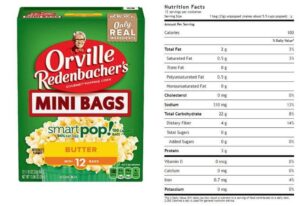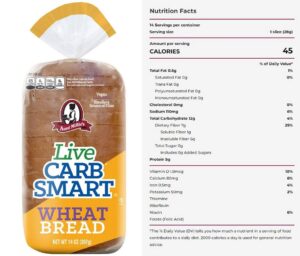7 min read, 1321 words
Improve Your Body’s Natural GLP-1 Production
Your gut already makes the appetite-suppressing hormone everyone’s talking about – here’s how to boost it naturally
What if I told you your gut already makes its own appetite-suppressing hormone? The same GLP-1 (Glucogon-Like Peptide-1) that’s making headlines in weight loss medications is something your body produces naturally every time you eat.
Here’s the kicker: most people’s natural GLP-1 production is seriously underperforming.
Why This Actually Matters
Your intestines are constantly scanning what you eat and releasing GLP-1 when they detect the right nutrients. This hormone then travels to your brain, hits the brakes on hunger, slows digestion to keep you satisfied longer, and helps regulate blood sugar.
It’s a brilliant system... when it works properly.
The problem? Modern eating patterns, chronic stress, poor sleep, and processed foods have trained our bodies to produce less GLP-1 and respond poorly to what we do make. The result: constant hunger, blood sugar roller coasters, and that annoying “food noise” in your head.
The good news? You can improve this system naturally, without injections or prescriptions.
The Big 6 Natural GLP-1 Boosters
1. Fiber Power Play
Not all fiber is created equal when it comes to GLP-1. You want the types that feed your gut bacteria, which then produce compounds that trigger GLP-1 release.
The winners:
- Soluble fiber: Oats, beans, apples, Brussels sprouts
- Resistant starch: Green bananas, cooked and cooled potatoes/rice, plantains
- Prebiotic fibers: Asparagus, garlic, onions, Jerusalem artichokes
The mechanism: Your gut bacteria ferment these fibers into short-chain fatty acids, which directly stimulate GLP-1-producing cells in your intestines. It’s like having a conversation between your microbiome and your appetite control center.
Easy swap: Replace your morning cereal with steel-cut oats topped with berries. Your GLP-1 production will thank you within hours.
2. Protein Timing Strategy
Here’s something most people miss: it’s not just about eating protein, it’s about eating it first and in the right amounts.
The sweet spot: 20-30g of complete protein at the start of your meal triggers maximum GLP-1 release. Your gut literally senses amino acids and responds by pumping out satiety hormones.
Quality matters: Complete proteins (eggs, fish, poultry, dairy, quinoa) work better than incomplete ones because they provide the full amino acid profile your GLP-1 cells are looking for.
Practical application: Before you touch your rice or vegetables, eat your chicken. Before you dig into that salad, finish your hard-boiled eggs. This “protein first” rule can double your meal’s GLP-1 response.
3. The Bitter Truth
Your taste buds aren’t just for flavor – they’re communication devices. Bitter compounds directly stimulate GLP-1 receptors in your gut, which is why traditional cultures often started meals with bitter herbs.
Natural bitter boosters:
- Dark leafy greens (arugula, dandelion, kale)
- Green tea and matcha
- Fresh herbs (cilantro, parsley, mint)
- Cruciferous vegetables (broccoli, cabbage, radishes)
Why we avoid them: Modern food processing has trained us to crave sweet and salty while avoiding bitter. But bitter compounds are like a direct phone line to your satiety centers.
Simple fix: Start meals with a small salad of mixed bitter greens, or sip green tea 30 minutes before eating.
4. Did You Know?…Physical Activity Improves GLP!
Exercise doesn’t just burn calories – it literally changes how your gut produces and responds to GLP-1.
Post-meal walks: Even 10 minutes of walking after eating can increase GLP-1 release by up to 30%. The mechanical movement stimulates your intestines, and the muscle contractions help with hormone signaling.
Resistance training: Lifting weights 2-3 times per week improves your body’s sensitivity to GLP-1, meaning you get more appetite control from the same amount of hormone.
Timing matters: The best GLP-1 boost comes from movement within 30-60 minutes after eating, when your gut is actively producing the hormone.
5. Sleep & Stress Connection
Poor sleep and chronic stress are GLP-1 killers. When you’re running on 5 hours of sleep or constantly stressed, your gut stops producing adequate amounts of satiety hormones.
The sleep connection: Just one night of poor sleep can reduce GLP-1 production by 20-30%. Your gut literally needs rest to function properly.
Stress sabotage: Chronic cortisol elevation blocks GLP-1 signaling in your brain. You might be producing the hormone, but stress prevents it from doing its job.
Quick fixes that work:
- Aim for 7-9 hours of sleep (non-negotiable for optimal GLP-1)
- Practice deep breathing before meals to activate your parasympathetic nervous system
- Manage stress through regular movement, meditation and focus on taking care of you.
6. Strategic Supplementation
Here’s where we separate the science from the snake oil. Some supplements have legitimate research for supporting natural GLP-1 production. The intent is not for you to take all these supportive supplements at once. Begin with one—Berberine is a smart choice. If it’s well tolerated, you may explore adding Yerba mate tea as a next step.
The evidence-based options:
Berberine: 500mg taken 2-3 times daily with meals. Works through the AMPK pathway to boost GLP-1 production and improve insulin sensitivity. Think of it as metformin’s natural cousin.
Inositol: 2-4g daily, particularly effective for people with insulin resistance. Improves GLP-1 receptor sensitivity and helps with blood sugar stability.
Chromium picolinate: 200-400mcg daily. Enhances GLP-1 receptor sensitivity and improves glucose metabolism.
Yerba mate: The specific amount is not definitively established however some believe 1-2 cups daily or 1000-1500mg extract. Contains compounds that stimulate GLP-1 release and provide gentle energy without the jitters.
Ginseng (Panax): 1-3g daily of standardized extract. Research shows it can increase GLP-1 production by up to 25% when taken consistently.
Psyllium husk: 5-10g daily with plenty of water. This soluble fiber directly feeds GLP-1-producing gut bacteria and helps with satiety. Note that psyllium is a bulk-forming laxative and can help relieve constipation.
Alpha-lipoic acid: Research on ALA for weight loss is preliminary, however studies suggest 300-600mg daily supports GLP-1 signaling pathways and provides antioxidant protection.
Curcumin: 500-1000mg daily with black pepper extract for absorption. Reduces inflammation that can interfere with GLP-1 receptors.
Timing and absorption tips: Take berberine and chromium with meals. Inositol works best on an empty stomach. Always start with lower doses and work up gradually.
The “Don’t Waste Your Time” Reality Check
Let’s be honest about what doesn’t work, despite the marketing hype:
“GLP-1 activator” proprietary blends: Usually overpriced combinations of herbs with minimal research. If they won’t tell you exactly what’s in it and how much, pass.
Most “natural appetite suppressants”: Caffeine might temporarily suppress hunger, but it doesn’t boost actual GLP-1 production. There’s a difference.
Extreme dosing: Taking 10x the research dose doesn’t make supplements work 10x better. It usually just makes them 10x more likely to cause side effects.
The supplements listed above have actual clinical research behind them for GLP-1 pathways. Everything else is mostly marketing fluff designed to separate you from your money.
Putting It All Together
Here’s your simple daily framework for maximum natural GLP-1 production:
Morning: Start with protein (eggs, Greek yogurt, cottage cheese, lean meats, or a quality protein smoothie). Add berberine or inositol if you’re supplementing.
Throughout the day: Include bitter greens with meals, aim for 25-35g of fiber from whole food sources, and prioritize complete proteins.
After meals: Take a 10-15 minute walk, especially after your largest meal of the day.
Evening: Wind down properly – your gut needs quality sleep to produce optimal GLP-1.
Weekly: Include 2-3 resistance training sessions to maintain GLP-1 sensitivity.
Remember: consistency beats perfection. You don’t need to nail every single strategy every day. Pick 2-3 that feel sustainable and build from there.
The compound effect is real – small, consistent actions in GLP-1 production can lead to significant improvements in appetite control, energy stability, and overall metabolic health over time.
Your body already knows how to make this powerful hormone. Sometimes it just needs a little strategic support to remember how to do it properly.
Ready to improve your natural GLP-1 production? Start with protein-first meals and post-dinner walks – your gut will start responding within days, not weeks.







